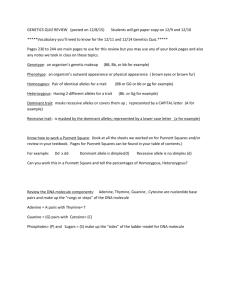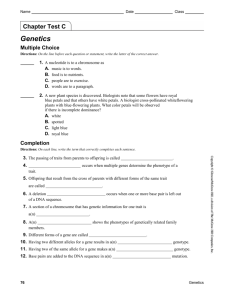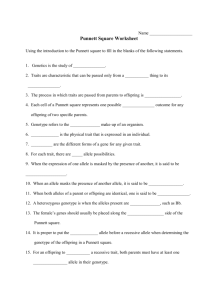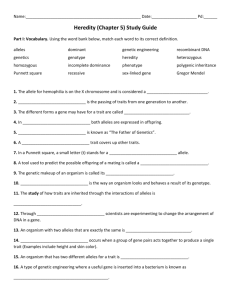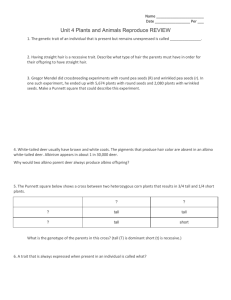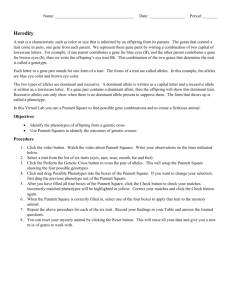Punnett squares and Pedigree Charts
advertisement
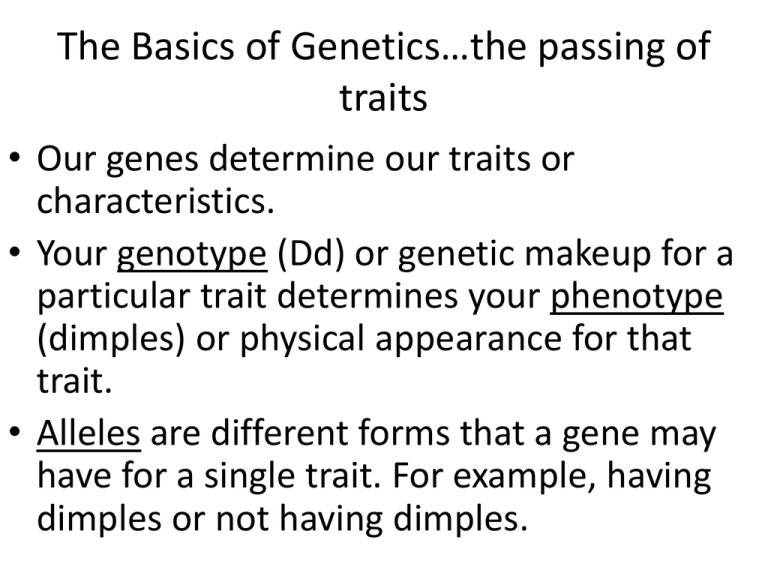
The Basics of Genetics…the passing of traits • Our genes determine our traits or characteristics. • Your genotype (Dd) or genetic makeup for a particular trait determines your phenotype (dimples) or physical appearance for that trait. • Alleles are different forms that a gene may have for a single trait. For example, having dimples or not having dimples. • Alleles can be represented by letters. You get one allele from each parent; that’s why there are 2 letters. • Alleles can be dominant, represented by a capital letter or recessive, represented by a lowercase letter. • Homozygous (pure) = 2 of the same alleles for a trait; for example: dd or DD • Heterozygous (hybrid) = 2 different alleles for a trait; for example: Dd Punnett squares and Pedigree Charts Punnett squares • A chart that shows the chances or probability of a particular trait being expressed in offspring. • Each box of the Punnett square represents a 25% chance for that trait being expressed. • Example: Cross Tt and tt • T = dominant allele = tall • T = recessive allele = short • The Tt and tt along the top and sides of the Punnett square are the genotypes for the parents. • The genotypes for the offspring are inside of the Punnett square. Interpreting Punnett squares • Remember that T is dominant over t, which is recessive. • Parent 1’s genotype = tt; phenotype = short • Parent 2’s genotype = Tt; phenotype = tall • There is a 50% chance of producing short offspring = tt because there are 2 boxes with that trait. • There is a 50% chance of producing tall offspring = Tt. Pedigree Charts (also see Pedigree notes) • There are four generations shown on this pedigree chart. • Squares = males and circles = females; if the shape is totally shaded then he/she has the condition; if the shape is shaded ½ way then he/she is a carrier for that condition. • Generation I parents had 2 boys and 3 girls of which only 1 has the condition.
